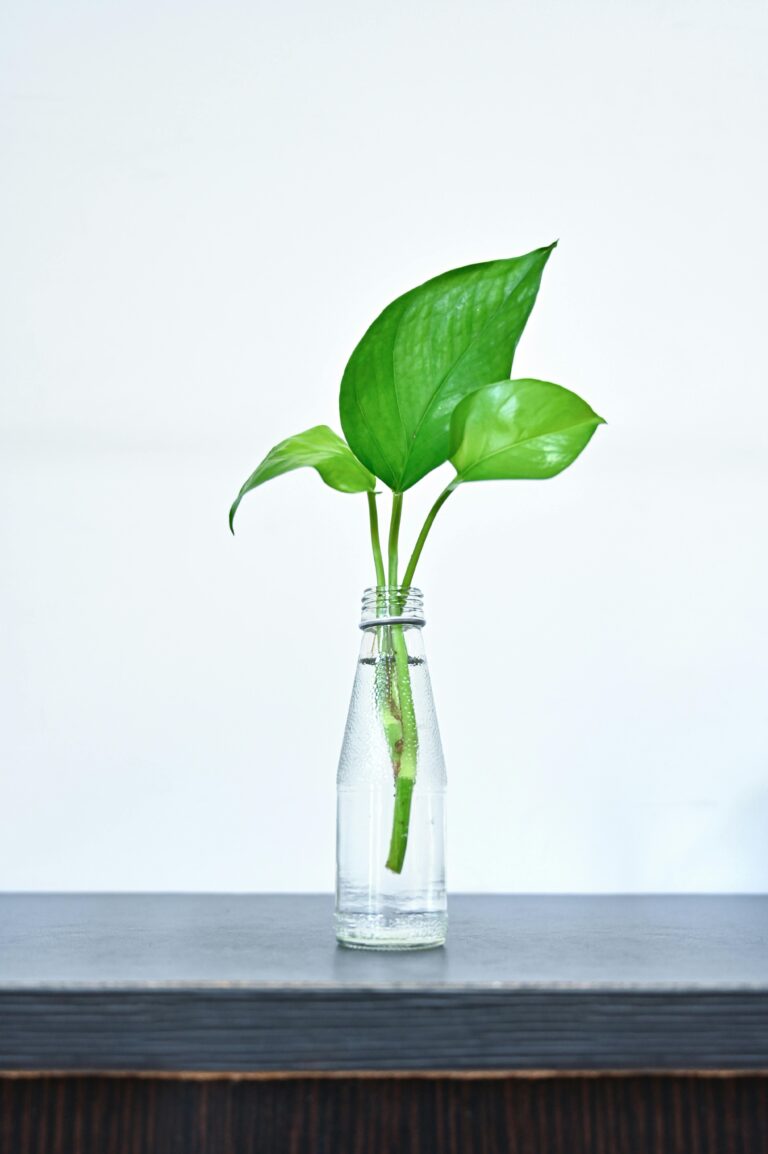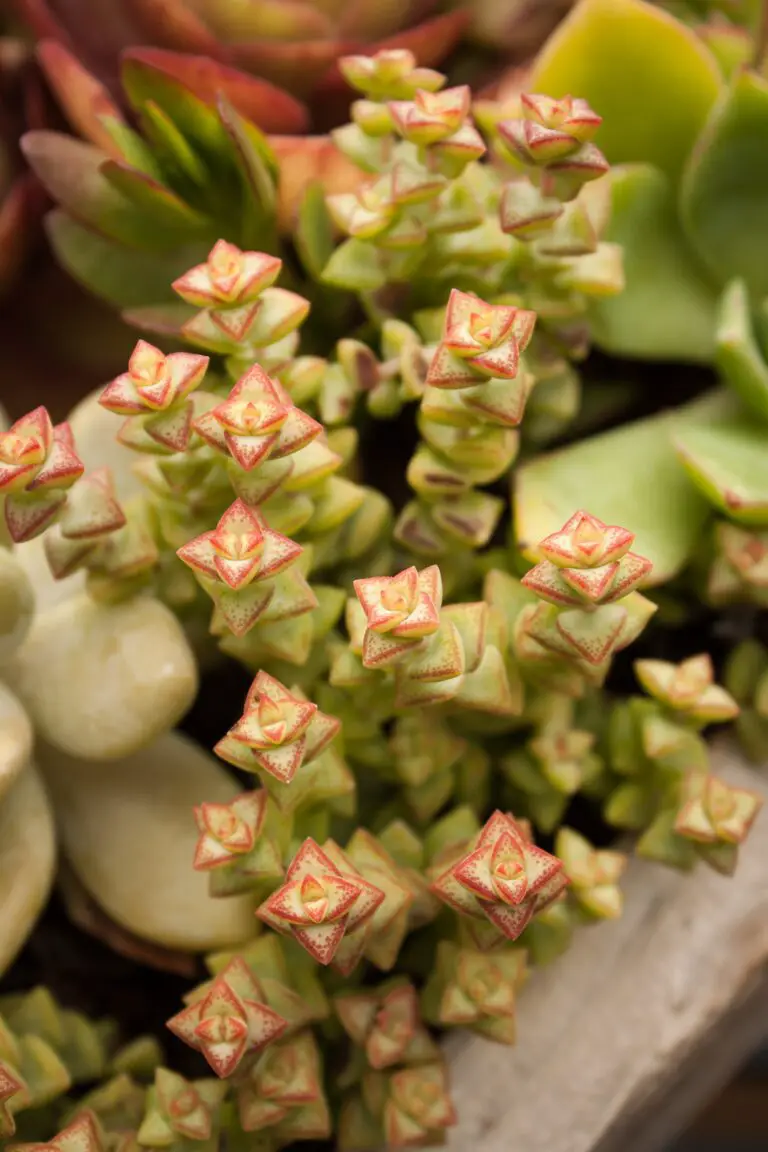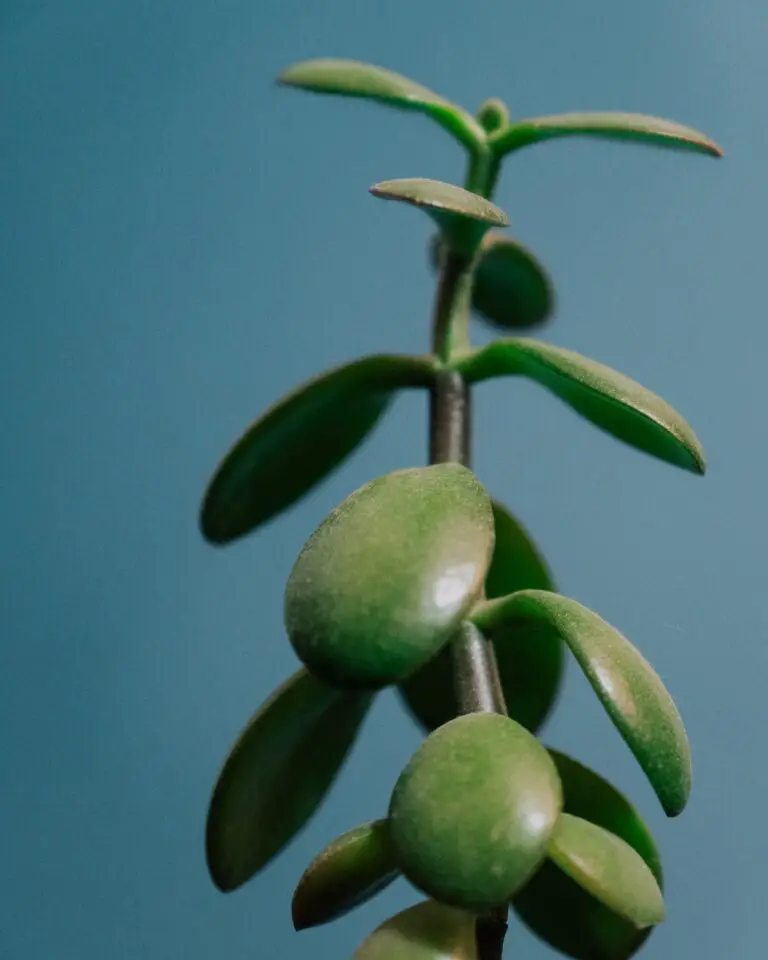Introduction to Crassula Propagation
Welcome to the wonderful world of Crassulas! These succulents, with their fleshy leaves and often striking forms, don’t merely survive in our homes; they thrive, bringing a little touch of nature’s marvels into our daily lives. Crassula propagation sparks curiosity and excitement—whether you’re an experienced green thumb or a novice looking to expand your indoor garden, the simplicity and versatility of these plants can captivate anyone’s interest.
So, can you propagate Crassula in water? Absolutely! This method is not just fascinating but incredibly satisfying to watch as tiny roots begin to sprout and reach out into their aquatic environment. Picture this: A single leaf falls from your prized Crassula ovata, also known as the Jade Plant. Instead of discarding it, you submerge the bottom half in a glass of water. Over time, what was once an inanimate object transforms into a living, breathing miniature ecosystem—a starter for your very own Crassula clone. It’s a perfect example of nature’s resilience and the boundless opportunities for cultivating your garden, even from the smallest of beginnings.
Propagating Crassula plants in water is also a great starting point for any enthusiast looking to understand the basics of succulent care. It allows you to closely observe root development, a crucial aspect of healthy plant life. While soil propagation is common, water propagation offers a clear view of what’s happening beneath the surface—without digging through dirt! And when it’s time to transition your rooted Crassula to soil, you will have gathered invaluable insights from the water propagation stage. Ready to learn more about successful cultivation and care practices? Dive deep into the essentials to keep your burgeoning houseplants flourishing.
Imagine a network of delicate water roots, a testament to life’s tenacity—the potential for growth nestled within each small leaf or stem cutting of Crassula. It’s a lesson in patience and the rewards of gentle, attentive care. Remember to keep these brave little water adventurers in a spot where they can bask in the indirect sunlight, cheering them on in their journey from water to soil.

Embarking on this propagation adventure offers more than just a new plant on your windowsill; it’s a hands-on experience with the wonders of the natural world. So, get your feet, or rather, your Crassulas’ leaves wet, and watch the magic happen in your very own propagation station.
Understanding Crassula and Its Varieties
Dive into the world of Crassula species, highlighting their unique characteristics and suitability for water propagation. Pioneers of adaptability, Crassula plants have etched their place in many plant enthusiasts’ hearts—and for good reason! Known for their versatility, they have become synonymous with ease and beauty in the realm of succulents.

A classic example of Crassula’s adaptability is found in a simple water propagation experiment. Imagine snipping off a plump, jade-green leaf and immersing it in water. In due course, tiny roots venture out, eager to extend their reach. The sight is not just rewarding; it symbolizes the plant’s incredible survival strategy.
Whether you’re enamored by the popular Crassula ovata, with its tree-like stature and glistening leaves, or you’re drawn to the whimsical beauty of the ripple-edged Crassula arborescens, each species brings its own zest to the table. Have you ever witnessed the charm of a Corkscrew Crassula as it twists and turns, defying the conventional? Such variety beckons a gardener’s curiosity to explore unconventional propagation methods.
Despite their robust nature, not all Crassula species are cut out for water propagation. Certain varieties prefer the stability that soil medium provides. Yet, many garden warriors who thrive on experiments have shared their success stories of Crassula cuttings taking root in water. It’s these real-life successes that inspire us to push the boundaries of gardening norms.
Why Consider Water Propagation?
Have you ever wondered if there’s a more straightforward approach to growing your treasured Crassula than the conventional soil rooting? Well, allow us to shed some light on the wonders of propagating Crassula in water! The notion might seem unconventional to some, but it’s a journey that many garden enthusiasts are embarking upon, and the results are nothing short of impressive.
Unlike the traditional method where the tiny roots search through the soil to anchor and nourish the plant, water propagation creates a clear and mesmerizing spectacle as roots gracefully extend into the liquid medium. Here, you can explore the vivid tableau of roots developing in real-time, providing not just a lesson in plant growth, but also a visually calm and engaging experience. But why make the switch, you ask?
Imagine snipping a slender piece from your resilient Crassula, submerging it in water, and watching daily as the roots emerge to dance in their aquatic cradle. The joy of bearing witness to this evolution is quite the spectacle, making it a favorable alternative to the surprise-and-wait game that soil propagation often plays.
Water propagation might also spark interest for its simplicity and the nearly surgical precision it offers. It’s typically cleaner than dealing with soil—no mess of dirt or unforeseen pests. Plus, the transparency of water propagation means any issues with roots can be spotted promptly, ensuring your growing Crassula plants have the best shot at thriving. Isn’t it wondrous to imagine enjoying your gardening passion with less fuss and unwelcome surprises?
Whether you’re a seasoned succulent collector or a novice seeking to greenify your space, this method could be your gateway into an even deeper appreciation of these fascinating plants. And why not? For those yearning for that touch of green in their home or office, watching the roots of a Crassula unfurl in water is a serene reminder of nature’s magic, whispering through clear glass.
Preparation for Water Propagation
Gearing up to transform your Crassula into an army of tiny green troopers? The secret to a successful enlistment lies in prepping the right cuttings for water propagation. Let’s embark on a verdant voyage and turn your Crassula plant into a fountain of flourishing offspring!
First and foremost, select a willing participant – a healthy Crassula limb that’s showing vigorous vitality. Look for stems that are sturdy, but still flexible, with an abundance of plump, hydrated leaves. This champion stem will become the cornerstone of your propagation project, so choose wisely.
Once you’ve identified the perfect candidate, it’s time to fetch those shears! But hold on – make sure they’re sterilized. A quick swipe with rubbing alcohol will fend off any unseen microbial marauders that could thwart your propagation plans. Neatness is next to godliness in cutting Crassula for cloning!
Snip your selected stem just below a leaf node. That’s the sweet spot where roots will gladly grow. Aim for a cutting about 2 to 3 inches long. This mini-me cutting should have at least a pair of leaves on top but strip the lower leaves to prevent decay when submerged.
Before granting your cutting its water wings, let it rest and develop a callus over the wound. This healing period can take a few days, safeguarding your cutting from watery woes and unwelcomed rot. Teaching patience now will reap a harvest of healthy Crassula clones later!
During this pause, prep your propagation vessel: a clean, clear container filled with water. The see-through sides aren’t just for your viewing pleasure; they allow you to monitor root progress without disturbing your peaceful plant prodigy. Just a side note — treat your water right! If your tap water is more of a chemical cocktail than pure H2O, let it sit out overnight or opt for distilled water instead.

With the right cut, a calloused end, and a crystal-clear crib, your Crassula cutting is now primed for its aqueous adventure. We’ve now laid the foundation for your tiny leafy legionnaires. Watch with wonder as they grow roots and eventually become full-fledged members of your green brigade!
The Step-by-Step Water Propagation Process
Embarking on the journey of propagating your Crassula in water isn’t just a gardening task; it’s an adventure. Imagine transforming a humble cutting into a flourishing succulent with nothing but H2O. Water propagation is an incredible dance of nature and nurturing, and we’re here to guide you through each step of this fascinating process.

Grab your scissors and clean, healthy mother plant—it’s time to make the cut. Aim for a piece about 4-6 inches long, snipping just below a leaf node, where roots will sprout. Feel the thrill as you coax out potential life from a single piece of Crassula. But hold that exuberance—we need those roots first!
Choosing Your Water Wisely
The water you select is like the elixir of life for your cutting. Fresh, room-temperature rainwater or distilled water offers the purity your Crassula craves. Restrain from tap water that may contain chemicals or minerals detrimental to the sensitive phase of root development. Picture your cutting as a connoisseur of fine water—it deserves the best.
Selecting the Perfect Container
Visions of elegant vases or quirky mugs for your cutting’s new home? Whichever container you choose, make sure it’s a clear one. This isn’t just for aesthetic delight; it allows for sunlight to reach the roots and for you to monitor progress. Keep the neck narrow to support the cutting, preventing it from being overly submerged—the Crassula is adventuring, not diving!
Positioning for Propagation Perfection
Now, let’s talk about positioning. How deep should the cutting venture into the watery depths? Aim for just an inch of the cutting’s base to dip into the water. You want the nodes where roots will emerge to taste the water, tantalizing them to grow, while keeping the rest high and dry. Perch it near a bright window where indirect sunlight can gently encourage growth, but not scorch our delicate adventurer.
As you watch your Crassula’s roots reach into the water, keep patience. The roots are navigating their new space, exploring it like a map to hidden treasure. Changes may seem minute, but the voyage from cutting to rooted glory is happening right before your eyes. With your knowledgeable care, your Crassula cutting is well on its way to root-bound success in its aquatic incubator.
Caring for Your Crassula During Water Propagation
If you’ve decided to embark on the adventurous journey of propagating your Crassula in water, you’re in for a treat! This is not your everyday gardening task, and it’s as much an art as it is a science. Imagine being a plant chef, mixing just the right ingredients to help those tiny cuttings flourish into lush, rooted beauties. Let’s dive into the care concoction that’ll turbocharge your Crassula’s water propagation success!
Sunny Side Up
First things first: light. Your Crassula cuttings crave that golden glow like a sunbather on a beach. But much like applying sunscreen, you need to moderate the exposure. Filtered sunlight is the cocktail of choice here – enough to energize, but not so much as to scorch. Think of a lightly shaded spot near a windowsill, with a curtain diffusing the rays to perfection, much like a cloud softening the sunlight on a bright day.

Temperature Tango
Next up, we’re doing the temperature tango! Crassula is like a guest at a party — it doesn’t want to be shivering in a corner or sweating on the dancefloor. It prefers a comfortable room temperature, somewhere between 65-75°F (18-24°C). Imagine your cuttings swaying gently in an environment that’s just right, free from the chills of drafts and the fever of heaters.
Water Change Waves
And finally, let’s talk water – the lifeblood of your propagation. Stagnant water is a big no-no; it’s like serving stale hors d’oeuvres to your guests. Refresh the water regularly, around once a week, ensuring it’s as crisp and clear as a mountain stream. This simple act can be the difference between cuttings that thrive and those that merely survive. Each water change is a fresh start, washing away the old and welcoming the new.
In this incredible process, you’re not just growing a plant; you’re creating life from water. With the right sunlight, temperature, and water care, your Crassula cuttings will transform from simple segments into full-fledged, root-rocking individuals. It’s a sight to behold and a testament to the magic of nature – and your nurturing touch.
Transitioning from Water Roots to Soil
Imagine the roots of your Crassula, dancing in the water like a well-choreographed ballet. They’ve reached the point of no return: robust, vibrant, and ready for their next stage—the transition to soil. This pivotal moment is where your green thumb expertise truly shines, as you guide your aquatic-rooted friend to flourish in the terra firma.
The key to a seamless transition lies in the gentle move from water to soil. Begin by preparing a cozy abode for your plant’s roots—a pot filled with a well-draining, succulent-friendly mix. The soil should whisper a welcoming ‘hello’ to the roots, as you nestle them inside without too much fuss or muss.
But take heed, this isn’t a hasty shove into dry land. It’s akin to helping a child acclimate to a new playground. Initially, keep the soil moist, like a comforting memory of its aquatic days, to ease the shock. Gradually, as weeks pass, reduce the watering frequency, encouraging the Crassula to seek sustenance from the earth.
If words don’t suffice, perhaps visual learning will seal the deal. Take a gander at this informative video, where you’ll witness a first-hand account of Crassula soaring from its watery cradle to a haven of soil:
As your Crassula acclimatizes, you might notice a shy root or two, unsure about the transition. Patience and subtle adjustments make all the difference. Keep a close eye on the light, temperature, and humidity. Your Crassula will thank you with new growth as it finds its footing in its new, soil-filled abode.
A successful transplant is like a well-told story; it has a satisfying end and leaves the protagonist—your resolute Crassula—thriving. Remember, every Crassula is a unique individual, so adapt your care to its personal narrative and watch as it writes a new chapter in the soil. It’s not just plant care; it’s a plant love affair.
Troubleshooting Common Issues
So, you’ve embarked on your plant propagation adventure and chosen to navigate the waters of crassula propagation. Splendid choice! However, just like a ship on high seas, you might encounter some challenges. But fear not, fellow plant enthusiast; let’s troubleshoot these common issues together and keep your propagation journey smooth sailing.

First off, rotting. It’s like the hidden iceberg waiting for the Titanic. You stick the cutting in water, and boom, a couple of days in, it looks more like a soggy noodle than the beginnings of a lush plant. Here’s a lifeline: cut off the rotted part, let the end callus over for a day or two, and… back into the water it goes! Make sure you’re using clean, fresh water and change it regularly to avoid bacteria build-up. Rotting makes your plant’s resistance as strong as a wet paper towel, so keep an eye for clear, foul-smelling water, or any mushiness at the base of your cutting.
Next up, the dreaded mold. So you wanted a plant, but instead, you’re growing a mini mushroom farm. Mold can creep up silently, covering your crassula cutting with a cotton-like fuzz. Not exactly the green you were going for, right? Don’t let it take root! Remove the moldy parts gently with a clean cloth and a mix of water and gentle soap. Prevention is your ally, so place your water propagation station in a well-ventilated area with plenty of indirect sunlight.
Finally, let’s talk about the root of the problem, quite literally – lack of root development. You’ve kept the water clean, no sign of the fuzzy mold beast, but your crassula cutting seems to have commitment issues, showing no interest in putting down roots. Here’s a tip: patience is a virtue. Some cuttings take their sweet time, and warmth can be a booster. Think about warmth like the pep talk you need before getting out of bed sometimes; it just encourages you to take the next step. A nice spot with indirect sunlight and away from drafts can work wonders. Just don’t rush the process, and before you know it, tiny roots will emerge as if by magic! Or science, in our case.
Keep these tips in mind, and your crassula cuttings will be thriving in their aquatic abode. With a little patience and some expert problem-solving, you’ll have baby crassulas sprouting roots faster than you can say ‘propagation perfection’!
Final Thoughts on Crassula Water Propagation
As we’ve delved into the nature of Crassula plants, it’s clear that water propagation stands out as a remarkably effective technique. Not only is this method straightforward, but it also offers a delightful simplicity that even novice gardeners can appreciate. Imagine this: a single leaf or stem cutting, when submerged in water, embarks on an extraordinary journey, sprouting roots and promising new growth—a testament to the resilience and adaptability of Crassula species.
The beauty of water propagation for Crassula lies in its hands-off approach. Once you’ve placed your cutting in water, nature takes over, doing what it does best. It’s a serene process, akin to watching ripples expand across a calm pond; slow yet profoundly transformative. The water environment creates a nurturing cradle for tender roots to emerge, heralding the birth of a new plant in the making. This method not only exhibits the power of simplicity but also echoes the compelling force of life that dwells within each leaf.
In our exploration, we’ve learned that patience is key. The ease of monitoring root development in a transparent vessel gives growers a tangible connection to the life unfolding before their eyes. This transparent and immersive experience can lead to joyful anticipation as we witness the emergence of rootlets and the promise of a future blossoming from the water’s depths. Hence, while the act of propagating Crassula in water might seem like a modest endeavor, it encapsulates a profound interaction with the marvel of plant life.
As water gently cradles the cuttings, it’s a reminder of the simplicity and purity of growth—a cycle that continues to captivate and reward gardeners around the world.

Frequently Asked Questions
Calling all green thumbs and plant newbies alike! If you’ve stumbled upon the idea of propagating Crassula, also known as jade plants, you’re probably bubbling with curiosity about the ‘can you propagate crassula in water’ conundrum. Let’s dive into some of the most common queries to root out the facts and grow your know-how.
Can You Really Start a Crassula Cutting in Water?
Absolutely! While some might swear by soil propagation, Crassula cuttings can indeed begin their journey in water. It’s like giving your cuttings a personal hydration spa before they hit the soil runways. This water-rooting runway show isn’t just for the aesthetics; it may boost root growth.
How Long Does It Take for Roots to Appear?
Patience is key here, plant propagators. It can take a buoyant Crassula cutting anywhere from a few weeks to a couple of months to flaunt its new roots in water. Much like waiting for your favorite avocado to ripen, it’s a test of patience and resilience.
Is There a Secret to Successful Water Propagation?
The secret is… the right conditions! Think of it as crafting the perfect cocktail — you need the right mix. A healthy cutting, clean water, proper light, and a whisper of encouragement can turn your Crassula propagation project into a success story.
Ready to see it in action? Here’s a peep into the propagation process with this helpful video.
Remember, the green journey is filled with trial, error, and triumph. So, whether you’re a seasoned plant parent or a succulent rookie, take these tidbits of wisdom and watch your Crassula thrive!



